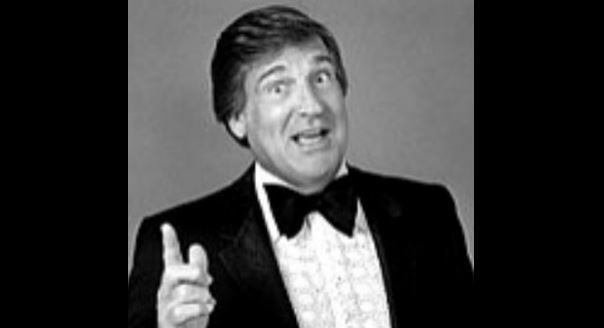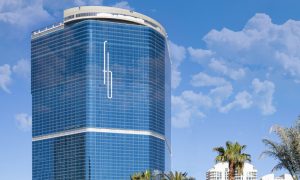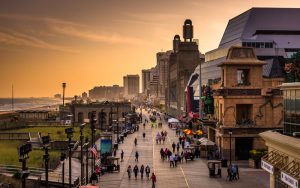Shecky Green, Legendary Comedian, Improvisation Master and Las Vegas Master, Dies at 97 — CDC Gaming Reports

LOS ANGELES (AP) — Cheeky Green, the gifted comedian and master improviser who became a Las Vegas lounge standout and was revered by his peers and live audiences as one of the greatest stand-up acts of his generation, has died. He was 97 years old.
His widow, Marie Musso Green, told… Las Vegas Journal Review That her husband died early Sunday at their home. She said that her husband died of natural causes at the age of 41.
Those who saw Green in his decades of comedic dominance on the Vegas Strip in the 1950s, 1960s and 1970s said that with a microphone in hand, he could walk around a room and interact with a crowd like no other.
He couldn’t wait to ditch scripted jokes for the thrill of shared improvisation.
“I’ve never done any acting before,” Green told the Las Vegas Sun in 2009. “I’m making it up as I go along.”
Green has gained a huge following among fellow performers including Bob Hope, Johnny Carson and, most famously, Frank Sinatra, who chose him as his longtime opening act. Green couldn’t resist a gig with America’s biggest star at the time, but the two big personalities often clashed, and the relationship ended with the comedian being beaten up by the singer’s friends at the Fontainebleau Hotel in Miami Beach.
This led to his most famous joke:
“Frank Sinatra once saved my life,” Green says. “There was a group of guys beating me up, and Frank said, ‘Okay, that’s enough.'”
Greene later said that Sinatra wasn’t actually there, but the hit was real. Also true is the oft-repeated story of Greene driving his Oldsmobile to the fountains of Caesars Palace in 1968, the result of what he admitted was a serious alcohol problem and a dangerous desire to go for a drive when he had had a few drinks.
He got a famous joke from that moment, too, later saying that when the cops arrived at his flooded car, which had its windshield wipers running, he told them: “No wax, please!”
With a body like a linebacker’s, a lightning-quick wit and a voice that suggested he could have been a lounge singer rather than a lounge comedian, Green was through the night digging through dozens of impressions, performing extended musical chops at audience members’ tables and turning musical standards into parody songs on Immediately.
Tony Zuby, who was entertainment director at the Riviera Hotel for decades, said Green was the best comedic mind he had ever seen.
“He’ll go out on stage and spend an hour off the top of his head,” Zuby told the Los Angeles Times. “A waitress dropped a glass – it took 15 minutes.”
He appeared in films including “Tony Roma” in 1967 with Sinatra, “History of the World Part One” in 1981 with Mel Brooks, and “Splash” in 1984 with Tom Hanks, and appeared in network sitcoms including “Laverne and Shirley” and Mad About You, and was a frequent guest on talk and variety shows.
But he never tapped on the screen. He needed a crowd he could interact with, and an entire night to attract them. This meant never becoming as famous as comedy contemporaries like Don Rickles, Buddy Hackett, or Carson. But he earned the same six-figure salary a week as they did on live shows.
Born Fred Sheldon Greenfield, Green began singing, acting, telling jokes and doing fake accents while growing up on Chicago’s North Side.
He served in the Navy in World War II in the Pacific.
Upon his return to Chicago, he went to community college and thought he might become a gym teacher, but he began performing comedy routines in a nightclub for money.
A two-week gig at New Orleans’ Prevue Lounge turned into a six-year stint.
He played his first show in Las Vegas in 1953. He found that he and Stripe were a perfect match, and within a few years he owned the city. In 1956, he opened for a young Elvis Presley at the New Frontier.
“The kid should never have been there,” Green told the Los Angeles Times in 2005. “He came out wearing a baseball jacket. And four or five musicians behind him were wearing baseball jackets. It looked like a picnic. After the first show, they changed the billing, and I headline.
Greene would remain a mainstay in Vegas, and its venues like the Riviera and Tropicana, for the next 30 years.
From 1972 to 1982, Green was married to Nalani Kele, a dancer whose show, Nalani Kele Polynesian Revue, was a long-running cabaret success. In 1985, he married Marie Musso, the daughter of jazz saxophonist Fido Musso.
Green eventually got his share of national fame. He could fill Carnegie Hall, and he guest-hosted both Carson’s “Tonight Show” and “The Merv Griffin Show.”
He struggled with drinking and gambling addiction, which was not ideal for a man who spent most of his time in Las Vegas. He also suffered from what were later diagnosed as severe depression and panic attacks, both of which made it increasingly difficult to perform as he grew older.
Greene moved to Palm Springs to try to retire in his late 70s in 2004, but the theater still held appeal, and he returned for a stint in Las Vegas at the Suncoast Hotel and Casino in 2009.
Returning to a city now dominated by the likes of Celine Dion and Cirque du Soleil, Green found he could wander the casinos anonymously.
“I’m a legend, but no one knows me in Vegas anymore,” he told The Sun in 2009.







